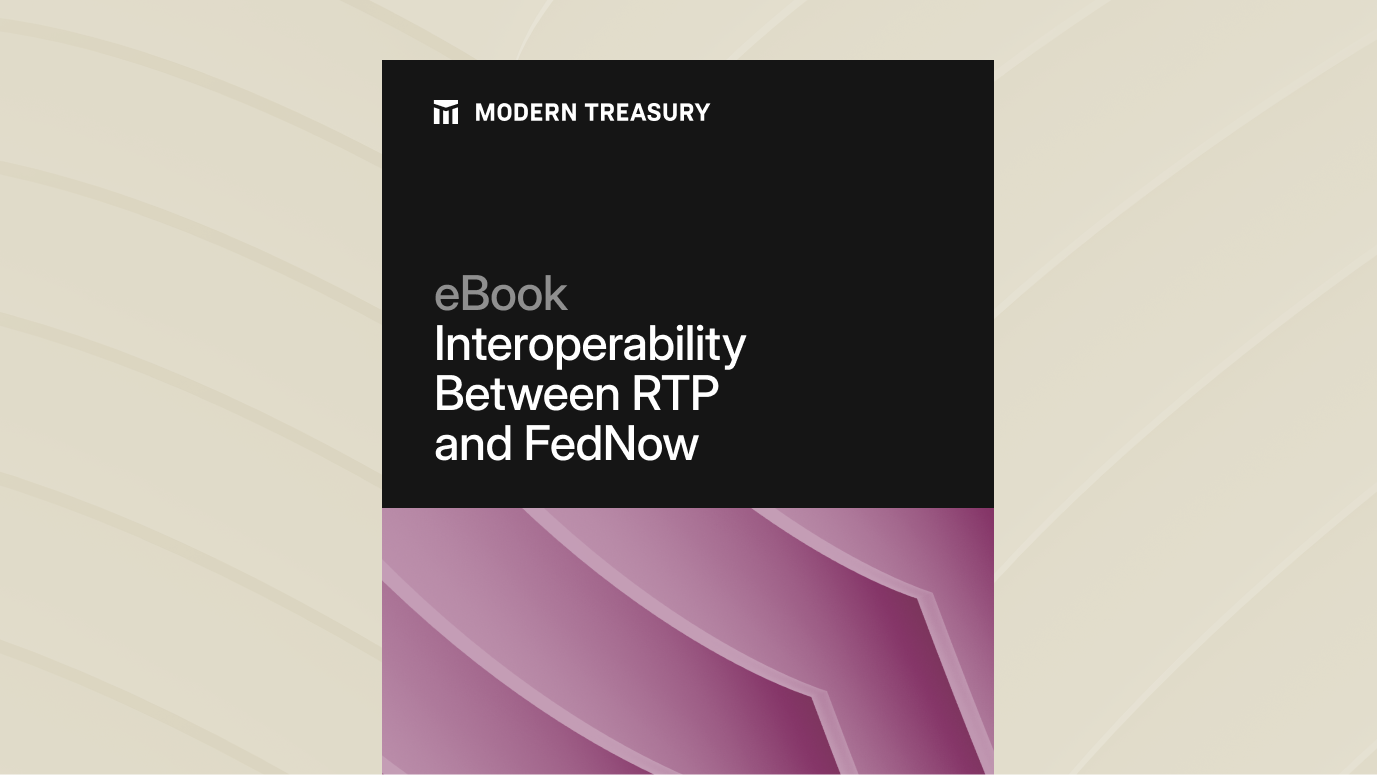Join us at Transfer 2025 to hear how industry leaders are building payments infrastructure for a real-time world.Register Today →
Why FedNow’s Real-Time Payments Will Change Everything
In this journal, we look at how businesses stand to benefit by embracing FedNow.

Some are calling it the most significant upgrade to US payment technology in decades. Later this year, the Federal Reserve is set to launch FedNow, a system that moves money from bank to bank in seconds rather than days.
The velocity of money is changing, but there are still lingering questions: What will this mean for enterprises? And what should they be doing right now, today to prepare?
Real-time payments are not entirely new. Countries across the globe, including Brazil, Singapore, and several European nations, have banking products that allow businesses and consumers to exchange money instantly. In the United States, The Clearing House—a consortium of the country’s largest banks—has offered banks a product it calls Real-Time Payments (RTP) since the end of 2017, but only a fraction of the nation’s financial institutions participate in it.
Yet a system blessed by the country’s central bank will be different. “The Fed is really trying to play a supporting role that helps smaller financial institutions in their capability of providing real-time payments to their constituents, ultimately supporting fast payments ubiquity,” says Cici Northrup of Glenbrook Partners, a payments consulting firm. If financial institutions of all sizes sign up, as expected, it will dramatically change the world of financial transactions.
“Real-time payments are a big deal,” says Modern Treasury co-founder and CTO Sam Aarons.
“Developed countries that have real-time payment systems or the equivalent see tremendous improvements. It’s a much better consumer experience. It’s a much better merchant experience. It’s a much better payment system.”
In the United States, The Automated Clearing House, or ACH, remains the most commonly used network for electronic payments. Launched in the 1970s, the ACH network quits at 5pm every day and takes weekends off. Three or four days can pass between the time a payment is initiated and when cash actually shows up in the counterparty’s bank account. “[FedNow] is light-years ahead of what we do today,” says Aarons, who served on a Federal Reserve steering committee while it was hammering out the details of the FedNow Real-Time Payments system.
Gradual Acceptance
If history is any guide, FedNow’s impact is likely to be felt gradually rather than all at once. The United States has more than 10,000 financial institutions, which explains, in part, the challenges that The Clearing House has had in recruiting banks outside its member group to adopt its RTP product. “Our growth has been steady at about 10 to 13 percent quarter over quarter,” The Clearing House’s Elena Whisler says.
But Whisler is among those bullish about what the FedNow rollout means for real-time payments generally in the US, and says the two systems will coexist.
“The Federal Reserve has a prominent voice in the US payment system and among financial institutions,” Whisler says. “If FedNow succeeds, we succeed because more people will see and experience money moving faster,” she says.
The Widespread Impact of RTP
That increased awareness of faster money movement could trigger a snowball effect in favor of a real-time payment network that could touch virtually every part of a company’s financial operations.
“Corporate practitioners will start to understand that they can pay timely and not need to pay three days in advance,” Whisler adds. “The visibility of cash coming in and out will change,” she says, allowing for more advantageous money management. Instant payments will mean that companies can hold on to their cash longer, which can make a difference, especially at a time of rising interest rates. “With RTP, a business can actually fund their payroll provider the same day, or the day before, rather than it sitting in somebody else’s account waiting to be paid out,” Whisler says.
There are also opportunities in the data-handling capabilities built into both FedNow and RTP. The transfer of data will allow businesses to eliminate the staff time required to manually link invoices and purchase orders to any funds that leave or enter a business.
“With real-time payments, businesses can operate in a more efficient way and know they can rely on the numbers they’re using to make decisions and share with investors,” Modern Treasury co-founder and CEO Dimitri Dadiomov says.
Rich, formatted data that accompanies RTP—and will soon accompany FedNow transactions—also means better financial forecasting. “A rub today with a lot of B2B account payables and receivables is not knowing when a posting will occur,” Whisler says. Over time, software can predict which customers will pay within days of receiving a bill and which will wait until the last possible date to transfer funds.
Happier Employees, Healthier Businesses
FedNow will also enable “requests for payment,” which could have tangible benefits for any companies involved in B2B commerce across various industries. Rather than mailing out rent statements, then manually processing hundreds of rent checks every month, for example, a corporate real estate company will initiate an electronic request for rent payment. Once the renter approves, the money will transfer instantly. The real estate company will see the cash appear in its accounts instantly, without waiting days for a check to clear—which makes predicting cash flows a challenge. With the added bonus of no check processing fees and no manual reconciliation of which check is for what, the real estate company will have a much better understanding of its cash flow, and ultimately a healthier business.
That will impact businesses big and small across a variety of sectors. “Think of any consumer company that handles large volumes of transactions,” Aarons says. “Think of insurance companies and ride-share companies. Think of any company that pays out regularly for some reason, even payroll companies.”
Whisler is already seeing the impact of instant payments on gig workers and hourly employees, and the companies that depend on them. What alternatively is called “on-demand payroll” or “earned wage access” is the fastest growing use of RTP, Whisler says.
“It could be a ridesharing driver getting paid at the end of the day, or after each ride,” she says. “Or it could be a hairdresser getting paid over the weekend. Or someone who has worked their five hours in retail and wants their money [once their shift ends].”. Increasingly, companies are using same-day pay “as a benefit to attract employees and retain them,” Whisler says.
Getting Ready for FedNow Instant Payments
To fully benefit from FedNow, businesses will have to embrace technological, organizational, and cultural shifts. “It’s a completely new system,” Aarons says of FedNow. Companies will have to revamp back-end systems and reimagine operations as they seek to capitalize on the efficiencies real-time payments offer and embrace new ways of enhancing customer satisfaction.
Security is another challenge. Real-time payments are both an opportunity for businesses that embrace change and for cybercriminals who seek ways to take advantage of a system where money transfers instantly. Additional checks will have to be put in place. The good news, says Northup, is that technology can help with fraud detection.
“There is a lot of discussion that we're seeing in the ecosystem around how data can be used and shared to combat fraud, and how ecosystem players can come together to do this in a better way,” Northup says. “There is a recognition that we have capabilities that we're not using to help mitigate fraud, and we can do it as an ecosystem by sharing information in a really smart and secure way to help bring that to life.”
Perhaps the biggest required shift will be cultural. “So many CFOs, and by extension controllers, accountants, and treasurers, were trained that money can only move during the business day,” Aarons says. “With a 24/7, 365-day payment system, you throw all that out the window.” That presents opportunities for forward-thinking CFOs and finance leaders who recognize that competitors might soon be taking their business if they fail to fully embrace instant payments and the expected benefits that will follow.
Try Modern Treasury
See how smooth payment operations can be.







